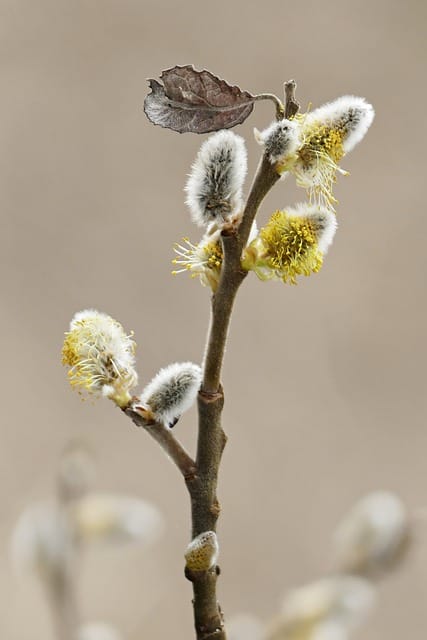Identifying Bay Willow trees
The Bay Willow tree, scientifically known as Salix pentandra, is a deciduous tree native to Europe and parts of Asia

In this article:
Introduction
The Bay Willow tree, scientifically known as Salix pentandra, is a deciduous tree native to Europe and parts of Asia. It is known for its graceful appearance and is commonly found near bodies of water.
Physical characteristics of the Bay Willow tree
The Bay Willow tree typically grows up to 20 meters tall, with a crown that is broad and rounded. Its branches are flexible and often hang gracefully, giving the tree an elegant appearance. The bark is smooth and grayish-brown in color.
Habitat and distribution
The Bay Willow tree is commonly found in wetland areas such as swamps, riverbanks, and lake shores. It prefers moist soil conditions and is often seen near bodies of water. The tree is native to Europe and parts of Asia, including countries like the United Kingdom, France, Russia, and China.
Leaves and bark
The leaves of the Bay Willow tree are shiny and oval-shaped with a pointed tip. They are usually dark green on the upper surface and paler underneath. The leaves are arranged alternately on the branches. The bark is smooth when the tree is young and becomes rough and cracked as it matures.
Flowers and fruit
The Bay Willow tree produces catkins, which are elongated clusters of small flowers. These catkins are yellow-green in color and appear in early spring before the leaves develop. The tree is dioecious, meaning it has separate male and female flowers on different plants. The female flowers eventually develop into small capsules that contain numerous seeds equipped with silky hairs for wind dispersal.
Identification tips for the Bay Willow tree
When attempting to identify the Bay Willow tree, consider the following key features:
- Graceful, weeping branches
- Smooth, grayish-brown bark
- Oval-shaped, shiny leaves with pointed tips
- Yellow-green catkins in early spring
Similar species to be aware of
While identifying the Bay Willow tree, be cautious of possible confusion with the following species:
- Weeping Willow (Salix babylonica)
- White Willow (Salix alba)
- Crack Willow (Salix fragilis)
Importance and uses of the Bay Willow tree
The Bay Willow tree has several ecological and practical uses. It helps stabilize riverbanks and prevents soil erosion. The tree also provides habitat for various bird species and insects. In addition, the flexible branches are used in the construction of baskets and furniture.
Conservation efforts and challenges
The Bay Willow tree is considered a species of least concern in terms of conservation status. However, the destruction and degradation of wetland habitats pose a threat to its population. Efforts to protect and restore wetlands are essential for the conservation of this tree species.
Conclusion
The Bay Willow tree is a beautiful and valuable tree species native to Europe and parts of Asia. By understanding its physical characteristics, habitat, and unique features, you can easily identify this tree in different environments. Ensure the preservation of wetlands to safeguard the future existence of this important tree.
